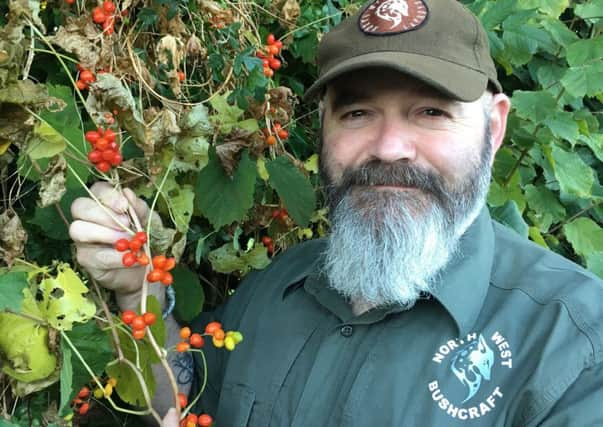Valley food foragers warned to beware of deadly fungi


But people could be putting themselves at risk by picking toxic and poisonous berries and fungi _ that is the warning from an expert who wants to make people aware of the dangers in the wild including one of the world’s most poisonous mushrooms.
Adrian Rose said it was vital that food foragers, keen to hunt out raw ingredients for their dinner table from source, knew what they were looking for.
Advertisement
Hide AdAdvertisement
Hide AdAdrian, who owns Chatburn based North West Bushcraft, said: “I am all in favour of people of going out into the forests and searching for natural ingredients as they are learning a new skill and also eating healthily.
“It is also a fantastic way to get children out and about and away from electronic devices but there are many poisonous plants and berries out there that could be harmful to people.”
Adrian, who teaches bushcraft and survival skills and also lectures on wild food foraging, said that Black Bryony, a red berry and the Death Cap mushroom which rates among the top five most poisonous fungi in the world, were common in the Ribble Valley.
He said: “On an almost daily basis we have to stop members of the public while out teaching courses because they have picked a basketful of poisonous berries such as Black Bryony.
Advertisement
Hide AdAdvertisement
Hide Ad“The Death Cap mushroom is also common and looks a lot like other mushrooms which people eat.”
The rise in popularity of food foraging comes from celebrity chefs encouraging people to seek out ingredients as they grow rather than going to the supermarket. And Chef Rene Redzepi even has a world-leading restaurant called Noma in London, known for its use of foraged food.
Black Bryony is a shiny red berry and the Death Cap mushroom can be yellow, brown, white or green in colour with a cap that is six inches wide and is often sticky to the touch. Underneath the cap are white gills at the base of the stalk there is a white cup.
They are seen from September to November under pines, oaks, dogwoods and other trees.
Advertisement
Hide AdAdvertisement
Hide AdAmateur foragers are also drawn to mushrooms known as Fly Agaric which have a red cap covered with white dots.
Often used in children’s story books they may look innocent but these types of fungi are also toxic and should not be picked or eaten.
Adrian, who runs his company with his wife, Louise and a group of trainers, added: “I grew up in the country so this is like second nature to me.
“It is important that people know what they are doing when food foraging.”
It is vital to forage correctly so that plants re-grow. Foraging has been popular in Europe for decades, particularly France where many families make a living from picking mushrooms.